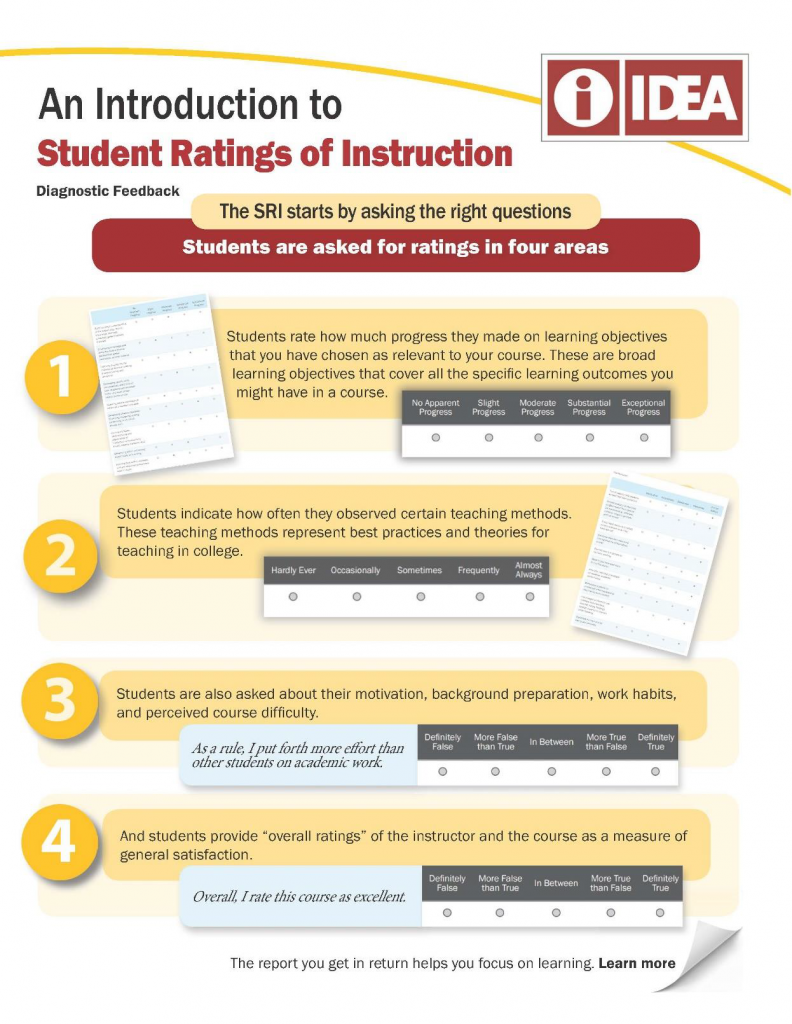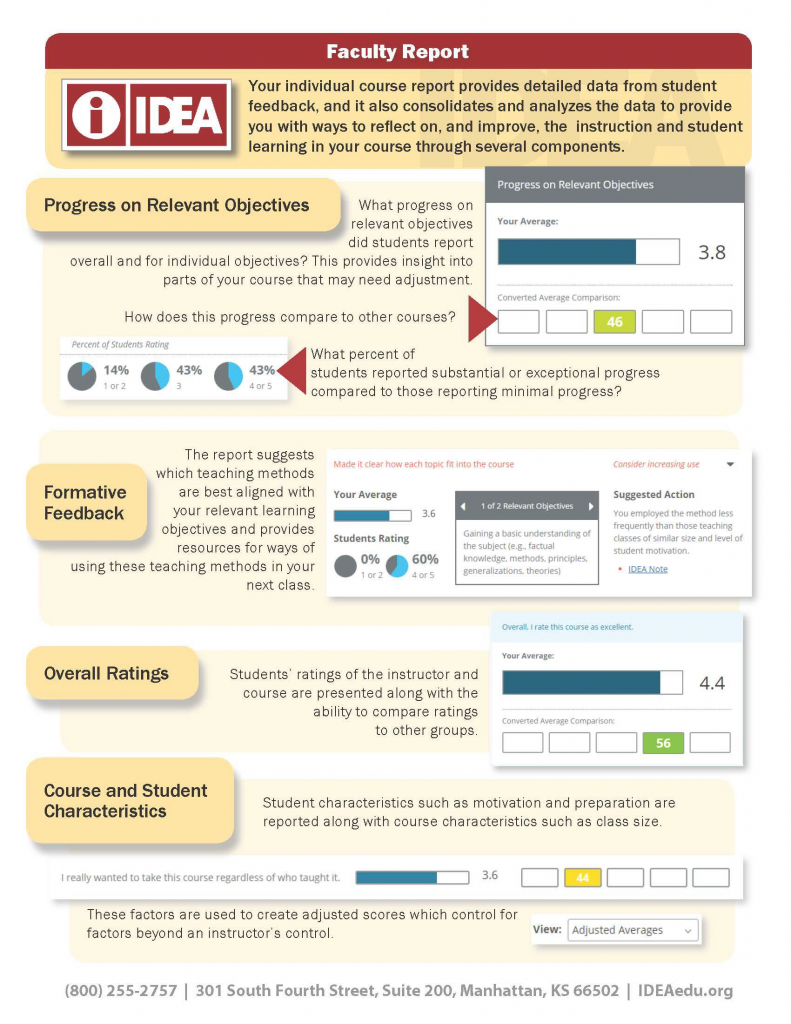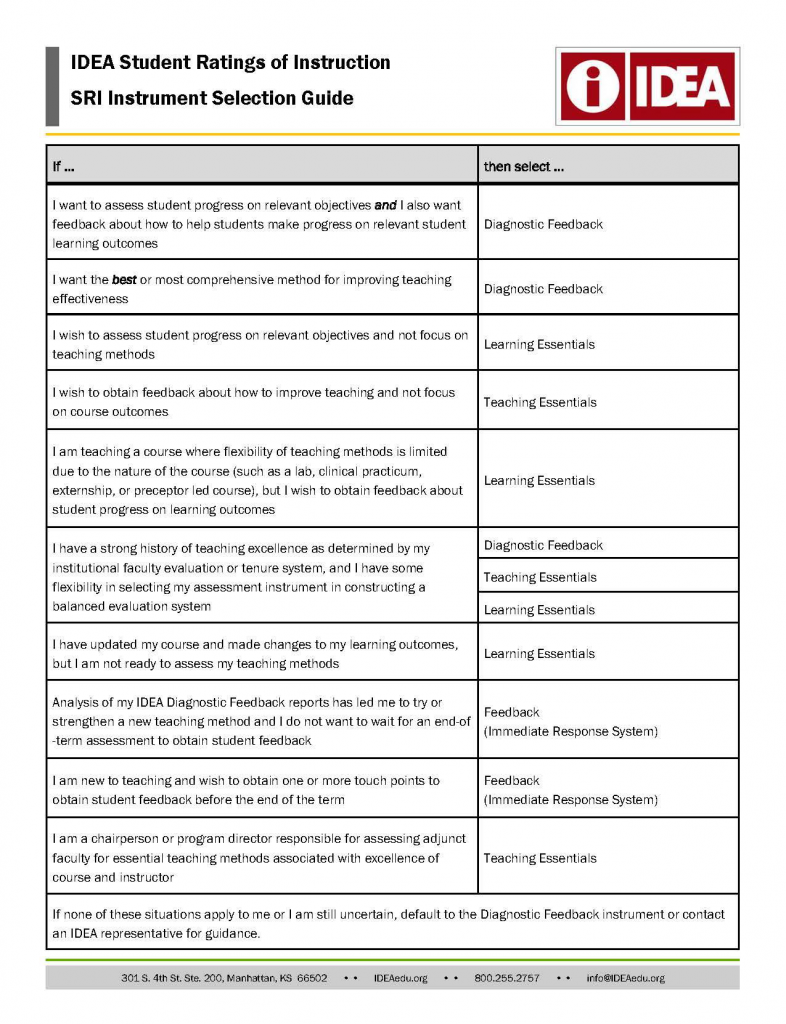General Information on the Use of IDEA as the Instrument for Student Ratings of Instruction

Currently all seven academic units in CAST and TCH in COE use IDEA as the platform for student ratings of instruction. IDEA is meant to serve as not more than 50% of the overall assessment of a faculty member in the area of teaching. The remaining variables for the assessment of teaching vary from unit to unit but often include peer evaluation, self-reflection of teaching, mentoring of students, updates to course materials, participation in professional development for teaching, and so on.
IDEA has document reliability and validity and includes national comparative data. The platform also includes a formative aspect to assist the faculty member with informed feedback on what teaching methods to adjust when teaching the course in the future.
There is also the ability to add a few custom questions to the student form if the faculty member is interested in feedback not represented on the existing instrument.
Conditions for appropriate use of IDEA
The instrument is learner focused and provides both formative and summative feedback. The summative component is meant to represent 50% or less of the assessment of faculty teaching and several class reports should be considered to look for trends in the summary of teaching. Campus culture related to teaching is an important consideration for the use of IDEA. Is teaching excellence considered a high priority? Are student ratings of instruction given an appropriate weight in the overall assessment of teaching? And, does the institution provide resources to aid those seeking to improve their instruction skills? Similarly, the individual faculty member should be one who values student
feedback, especially the formative aspect, and is willing to use the formative feedback to make improvements to teaching over time.
Overall premise of IDEA
Specific teaching behaviors influence certain types of student progress under certain
circumstances. Through the questions asked on the student response form, data are collected on the frequency by which the faculty member employs various teaching behaviors, progress on relevant objectives, and input on course characteristics beyond the control of the faculty member. There are also overview questions in which the students are asked about the excellence of the faculty member and the course.
Selecting relevant learning objectives
In addition to the course-specific learning objectives for each course, faculty members must also prioritize relevant learning objectives for the course from a list of 13 provided by IDEA. These objectives are determined early in the semester by the individual faculty member and are identified on the Objectives Selection Form (OSF) in the faculty portal for the course. The faculty member selects no more than 3 to 5 of the 13 objectives as either important or essential to the course. All remaining objectives are to be indicated as minor or no importance to the course. Objectives indicated as essential are double-weighted in the analysis. Objectives indicated as important are single-weighted in the analysis. The faculty member should ask, is the objective a significant part of the course? Do you do something specific to help students accomplish the objective? And, does the student’s progress on the objective influence his or her grade in the course? Please note that
selecting more than 5 objectives as important or essential generally has a negative impact on the faculty score.
It is recommended that the faculty member consider listing the IDEA learning objectives on the syllabus along with the course-specific objectives and discuss the meaning of the objectives with the students.
False Assumptions of IDEA
- Effective instructors employ all 20 teaching methods. This is NOT true.
- The 20 teaching methods are used to make an overall judgment about teaching effectiveness. This
is also NOT true. The teaching methods are used for the formative aspect of the report. - Students should make significant progress on all 13 learning objectives. This is also NOT true.
Only 3 to 5 objectives can be the focus of a full-semester course.
Obtaining Additional Information
- Ideaedu.org includes several instructional videos and helpful tips on using IDEA
- The website also includes numerous papers and notes on effective teaching and outcomes of
research on student ratings of instruction.
Faculty Report



Which Report Do I Want?

